 NASA的航空研究人员将利用Maxwell演示机,展示电动推进系统可以使飞机更安静、高效、环保。
NASA的航空研究人员将利用Maxwell演示机,展示电动推进系统可以使飞机更安静、高效、环保。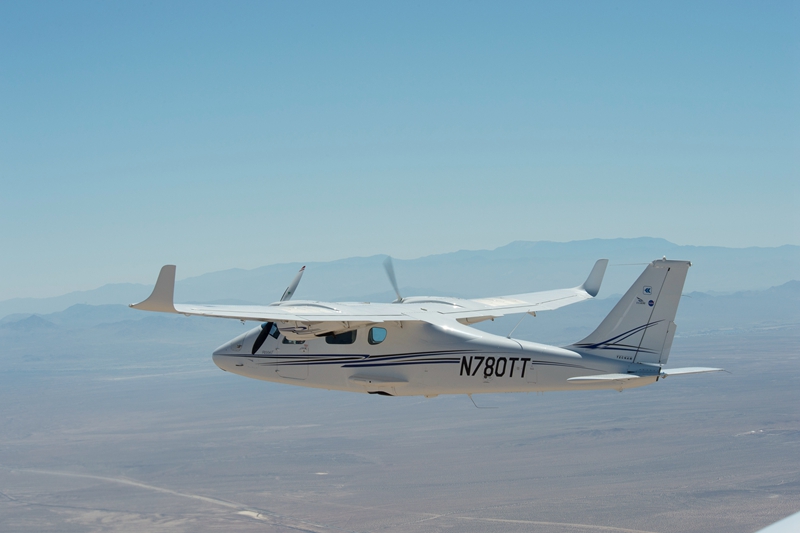 去年9月,阿姆斯特朗中心的飞行员曾驾驶一驾意大利制造的Tecnam P2006T飞机,收集飞行数据,为NASA正在研发的改装机型提供对比材料。一旦此项工作完成,阿姆斯特朗中心的工作人员就可以将一款经过专门开发的机翼整合至安装了电机的飞机上,进行研发飞行。(所有图片均由NASA提供)
去年9月,阿姆斯特朗中心的飞行员曾驾驶一驾意大利制造的Tecnam P2006T飞机,收集飞行数据,为NASA正在研发的改装机型提供对比材料。一旦此项工作完成,阿姆斯特朗中心的工作人员就可以将一款经过专门开发的机翼整合至安装了电机的飞机上,进行研发飞行。(所有图片均由NASA提供)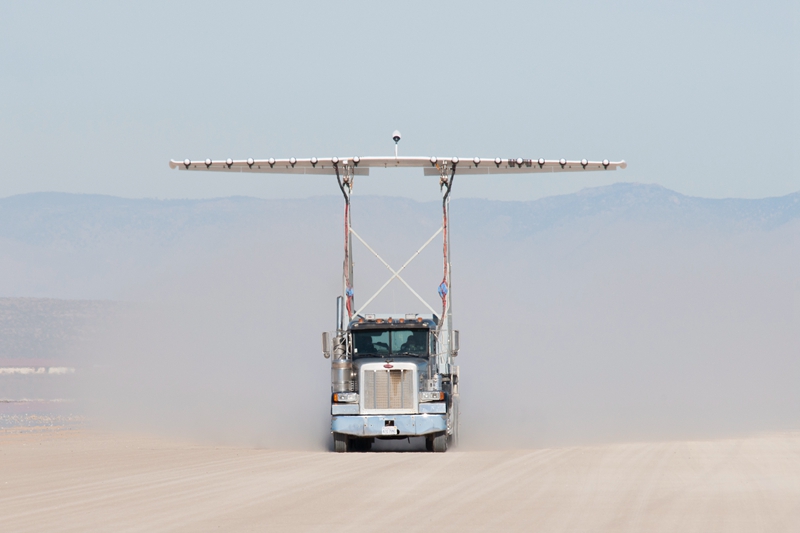 工程师正在利用HEIST测试台,收集新型机翼设计的空气动力学数据。
工程师正在利用HEIST测试台,收集新型机翼设计的空气动力学数据。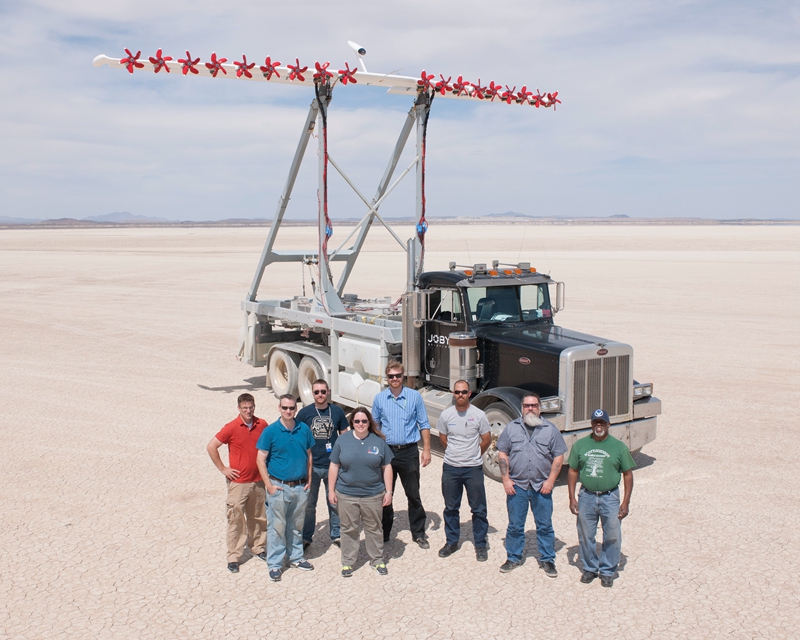 前沿异步螺旋桨技术(LEANTech)地面测试团队的成员,从左到右分别为Brian Soukup、Sean Clarke、Douglas Howe、Dena Gruca、Kurt Papathakis、Jason Denman、Vincent Bayne和Freddie Graham。
前沿异步螺旋桨技术(LEANTech)地面测试团队的成员,从左到右分别为Brian Soukup、Sean Clarke、Douglas Howe、Dena Gruca、Kurt Papathakis、Jason Denman、Vincent Bayne和Freddie Graham。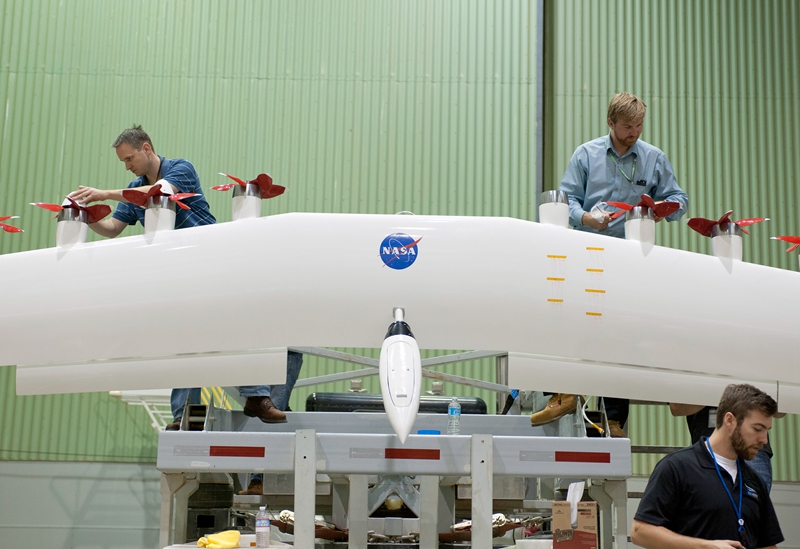 工程师正在研发一款配备电机的机翼,这也是综合HEIST试验测试台的一部分。左上为Sean Clarke,右上为Kurt Papathakis,右下为Anthony Cash。
工程师正在研发一款配备电机的机翼,这也是综合HEIST试验测试台的一部分。左上为Sean Clarke,右上为Kurt Papathakis,右下为Anthony Cash。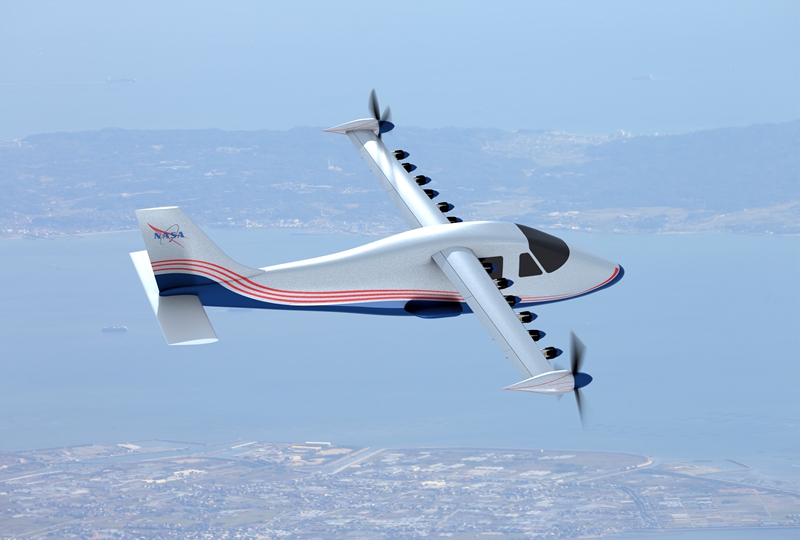 图为NASA Maxwell X-57概念机,这驾试验机的特别之处在于经过特别设计的机翼,及机翼上的14部电机。
图为NASA Maxwell X-57概念机,这驾试验机的特别之处在于经过特别设计的机翼,及机翼上的14部电机。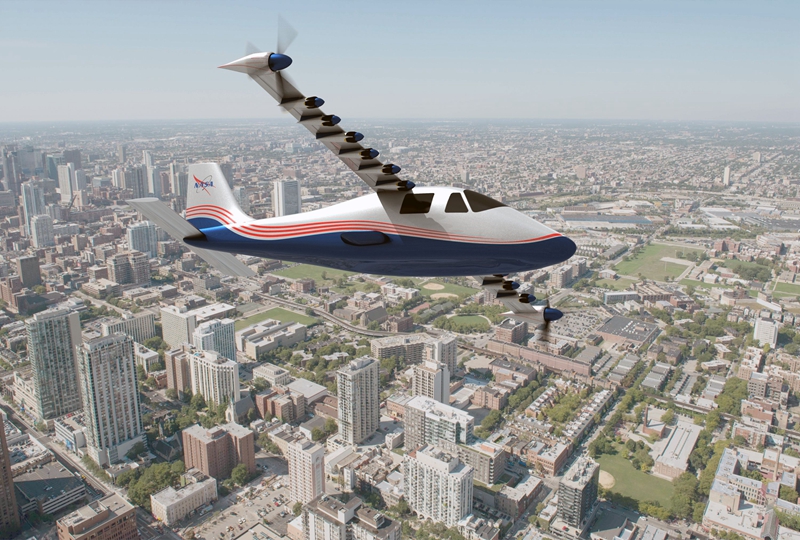 NASA的航空研究人员将利用Maxwell演示机,说明电动推进系统可以使飞机的飞行更加安静、高效、环保。
NASA的航空研究人员将利用Maxwell演示机,说明电动推进系统可以使飞机的飞行更加安静、高效、环保。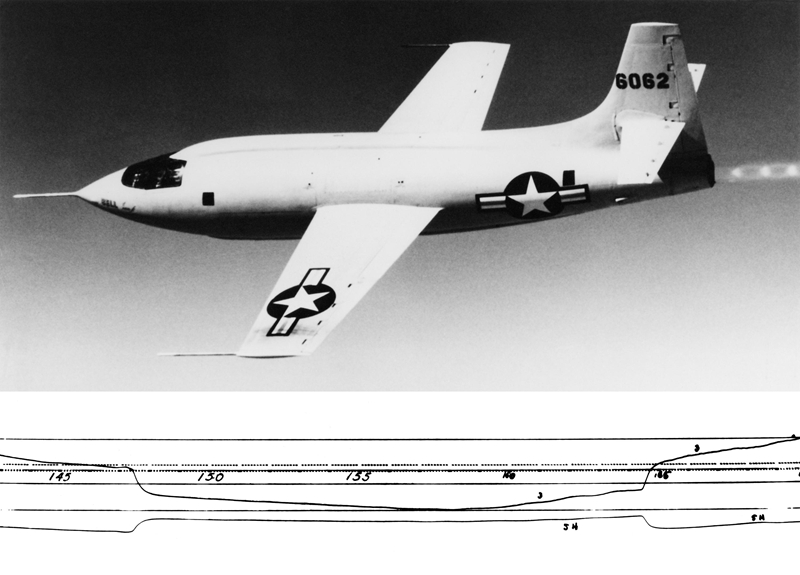 在X-Plane系列中,1947年诞生的X-1由Bell Aircraft公司打造,可突破“音障”,是世界上首款超音速飞机。
在X-Plane系列中,1947年诞生的X-1由Bell Aircraft公司打造,可突破“音障”,是世界上首款超音速飞机。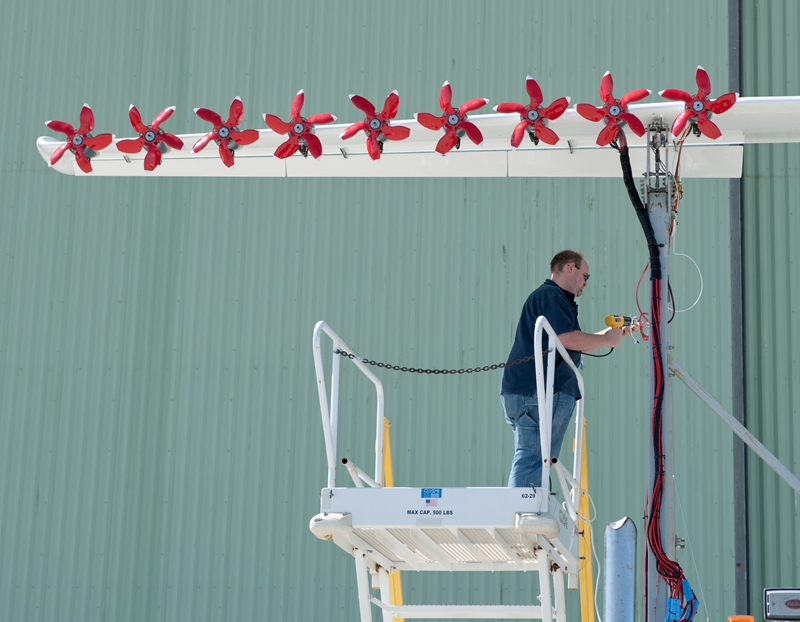 2015年3月,NASA阿姆斯特朗中心中,工程师正在建设LEAPTech。
2015年3月,NASA阿姆斯特朗中心中,工程师正在建设LEAPTech。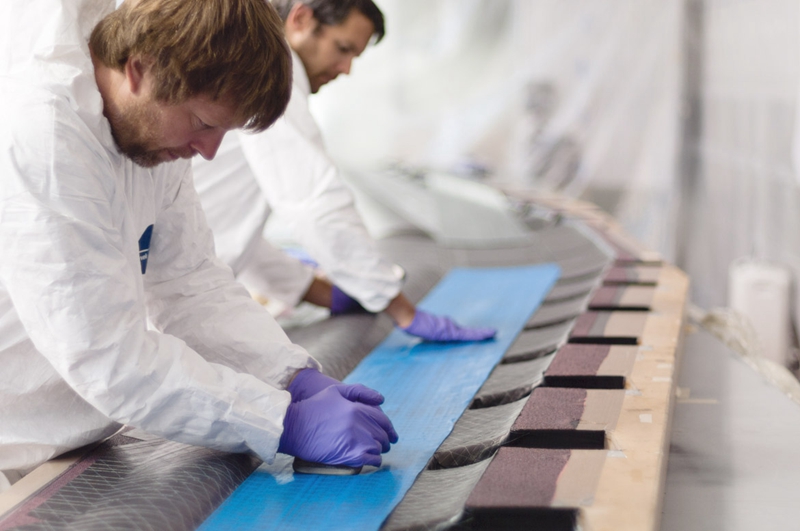 JOBY公司的复合材料技师正在生产LEAPTech的下机翼外皮。
JOBY公司的复合材料技师正在生产LEAPTech的下机翼外皮。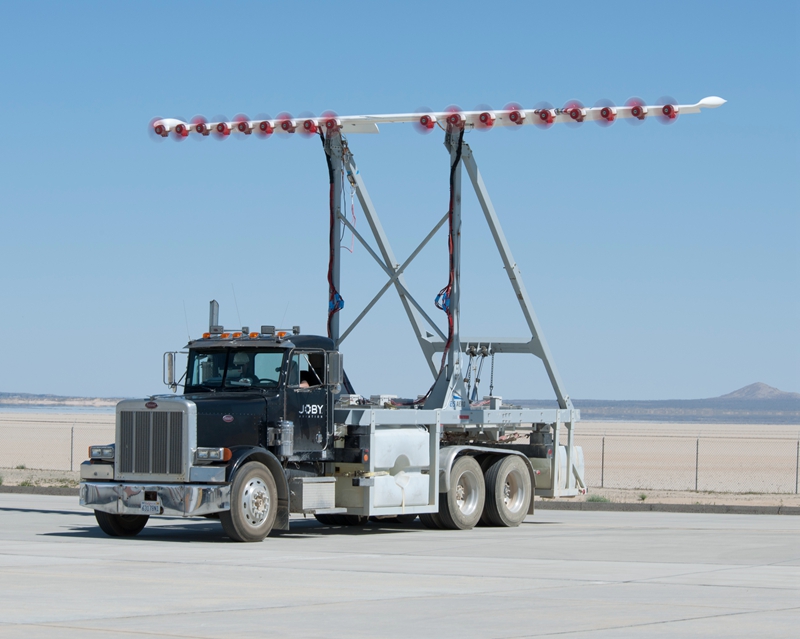 2015年6月,NASA阿姆斯特朗中心内的LEAPTech测试台。
2015年6月,NASA阿姆斯特朗中心内的LEAPTech测试台。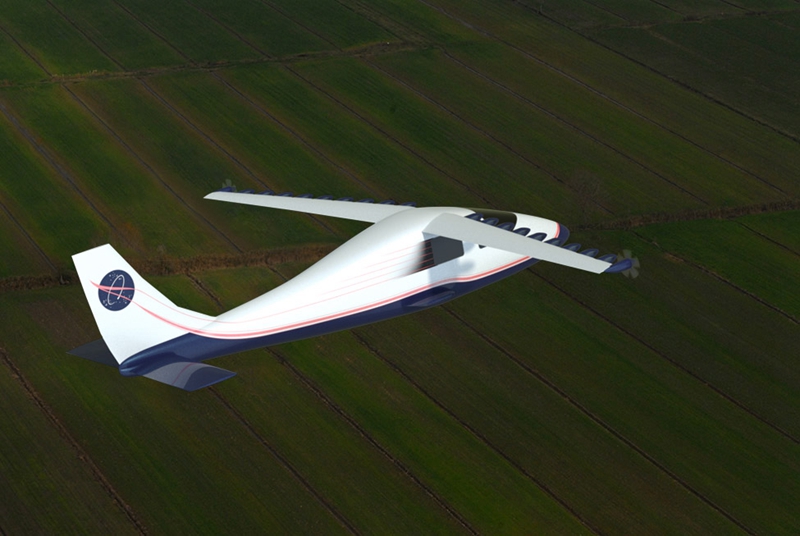 NASA的航空研究人员将利用Maxwell演示机,说明电动推进系统可以使飞机的飞行更加安静、高效和环保。
NASA的航空研究人员将利用Maxwell演示机,说明电动推进系统可以使飞机的飞行更加安静、高效和环保。 NASA Maxwell通用航空尺寸X-57的早期渲染图。
NASA Maxwell通用航空尺寸X-57的早期渲染图。
不久以前,还很少有人会认为自己需要一部可以拍照、录像的手机。但近来却很少有人会选择没有这类功能的手机了。事实上,如此迅速的技术发展并不仅仅发生在个人通信产品领域,也注定会向个人运输等其他领域扩张。
汽车和航空航天行业都正处于技术“搅局者”掀起的漩涡之中。在汽车行业内,有人认为驾驶车辆可能很快会成为一种“失传的艺术”。那时,仅有“极少部分”人需要谨记遇到红灯是否可以右转,以及路面上虚虚实实的黄线到底代表什么意思,而对于绝大部分人而言,这些事情将全部交给自动驾驶汽车的程序处理。自动驾驶汽车可以接送乘客:比如某天仅靠Skype视讯或电子邮件无法应付工作需求时,自动驾驶就可以送乘客前往公司,而在这一过程中,乘客完全可以在车内继续使用他们的笔记本电脑工作。
未来,除了开车以外,人们或许还将拥有新的日常通勤选择。看起来,NASA(美国国家航空航天局)至少给出了一个答案!
作为近期公布计划的一部分,NASA正在开展一系列战略研究项目,涉及静音超音速飞行、电动分布式推进及混合翼飞机等,旨在展示多项可以降低油耗、排放和噪声的先进技术,并加速从技术到市场的蜕变。
特别需要指出的是,该计划的目标之一将专注于发掘新思路,研发更加安静、高效、环保的电力推进通用航空飞机。与当下的通勤型飞机相比,这种新型飞机将为人们提供一种更加清洁高速的个人与商务出行选择(见“less congest,at least in theory”)。
顺着这些思路,NASA将利用一款经过专门设计的X-57试验机,测试新型推进技术。据了解,这款试验机绰号“Maxwell”,以纪念19世纪著名苏格兰物理学家James Clerk Maxwell在电磁感应方面的开创性贡献。这架试验机的电机驱动螺旋桨将被整合在经过专门设计的机翼之中。
今年6月中旬,NASA局长Clarles Bolden在一次讲话中表示,“随着X-Plane试点项目的回归,NASA的研发能力可以得到极大地提升,这也将成为我们10年计划‘航空新视野(New Aviation Horizons)’的重要组成部分。这款通用航天尺寸的X-57将带领我们迈出开启航空新纪元的第一步。”X-57是NASA近10年来的首款X-Plane;此外,作为计划的一部分,NASA还计划设计研发5款尺寸较大的运输型X-Plane。
具体来说,X-57编号是由美国空军(U.S. Air Force)指定的。按照要求,NASA会先提出申请,而后负责命名流程的美国空军会为新机型指定一个名称。在X-Plane系列中,1947年诞生的X1是世界上首款超音速飞机。
NASA航空研究任务理事会副局长Jaiwon Shin表示,“自此之后,十多款不同形状、尺寸和用途的X-Plane相继诞生,不断巩固美国作为世界航空航天技术领导者的地位。”
目前,在美国空军处登记在列的X-Plane已经排到了56号,但这并不意味着世界上有56款X-Plane,这是因为有些机型共用了同一个编号,还有一些试验性机型历经设计、制造,甚至飞行等阶段,但最终未能获得X编码。
事实上,还有一部分编码从未被真正启用。比如,美国空军在为X-Plane编号时直接跳过了X-52,这是为了避免与B-52轰炸机产生任何混淆。还有一些X-Plane完全不是试验机,而是量产飞机或航天器的原型,NASA主任历史学家Bill Barry表示,“这会让人们很难分辨到底哪些是真正是X-Plane,哪些并不是。”
NASA的可控规模电力推进技术与运行研究(Scalable Convergent Electric Propulsion Technology and Operations Research,简称Sceptor项目)属于一项为期4年的飞行演示计划,主要将借助一款由意大利设计的新型TecnamP2006T双发动机轻型飞机,打造X-57试验机。
NASA将用一款内置14个电机的细长型机翼替代Tecnam P2006T本身机翼加2部燃气活塞发动机的设计,其中12个电机位于机翼前沿,可在起飞和着陆阶段发挥作用,另外2个较大电机分别位于两侧机翼的翼尖,主要在飞机处于巡航高度时发挥作用。
NASA阿姆斯特朗飞行研究中心(Armstrong Flight Research Center)的联合首席研究员Sean Clarke表示,利用现有机型打造试验机有一个好处,那就是可以对比飞机在不同配置下的性能。目前正在建设中的Tecnam预计将在阿姆斯特朗停留将近一年时间,完成机身与机翼的整合。阿姆斯特朗中心还曾在去年9月试飞另一架不同配置的Tecnam P2006T,以收集原始配置下的性能数据。
NASA的工程师希望验证一个事实,那就是在时速175mph的巡航状态下,采用分布式动力推进系统的私人飞机,其燃料消耗比普通飞机低5倍。
此外,分布式动力推进系统还有其他几个优势。由于仅借助电池供电,这款绰号“Maxwell”的X-57将不会产生任何碳排放,并且还可以在理想情况下,表明未来通用航空业对含铅航空燃料的需求必将萎缩。
借助X-57的技术,处于巡航高度的小型飞机预计最高可将飞行时间、燃料消耗及总运行成本降低40%。通常情况下,为了获得最佳燃料效率,飞机并不会以最高时速飞行。然而,从本质来说,电力推进系统并没有燃油推进机型在全速巡航时的弊端。这款X-57采用的电力推进技术有望显著降低飞机噪音,从而赢得更多公众的好感,并进一步吸引过去曾回避或关闭小型机场的社区。
NASA的研究人员预计将在2019年推出一款500-kW的9座飞机。对比来说,500kW(约700hp)的功率几乎是常见乘用车发动机的5倍。
Clarke表示,为了实现这个计划,NASA在三个领域的研究都取得了一定进展,包括利用一辆卡车测试受试机翼的性能;开发并使用一款新型模拟器观察电动飞机的控制与操控特性;以及验证协助NASA工程师进行飞机设计与制造的工具,而这本身也是NASA为了协助开发创新低碳推进系统,并将其推入市场的努力之一。
首先,NASA与Joby Aviation和ESAero公司合作,最初先在一辆经过特别改装的卡车上安装了一款试验性机翼,并最终打造了一个混合电力综合系统测试台(Hybrid Electric Integrated Systems Testbed,简称HEIST)。HEIST测试台曾在多项研究中发挥作用,主要用于整合复杂电力推进系统的项目。
HEIST测试台的功能类似于地面上的风道,最高可加速到73 mph(116.8KM/h),协助研发人员收集数据。研究人员可以利用测试台测量飞机的升力、阻力、俯仰力矩和滚转力矩,进而对研发工具进行验证。
“通过对比真实测量结果和CFD的预测,我们可以判断这些预测是否准确。”Clarke表示,“由于这是一个全新的设计,我们必须保证透彻了解实验机翼的性能。”
HEIST参与的首个实验名为“前沿异步螺旋桨技术”,简称LEAPTech。这个实验今年5月始于NASA的阿姆斯特朗中心,主要是将18个电机整合至一款带有锂离子电池的碳纤维复合材料机翼。
目前的实验显示,这款18电机的分布式推进系统在低速时提供的升力是传统推挤系统的2倍多。
NASA的另一项主要工作是不断开发、完善研发工具。例如,为了评估飞机的操控性能,研究人员计划将飞机的系统整合至一款供飞行员使用的NASA阿姆斯特朗飞行模拟器。Clarke表示,研究人员还将研究如何平衡电池电机与涡轮之间的功率需求。大家关心的是这种分布式电机与天然气涡轮机的混搭能否延长飞机的续航里程,出产一款9座概念机,甚至永远改变未来“minivan飞机”的定义。
作者:Jean L. Broge
来源:SAE《航空航天工程》杂志
翻译:SAE 中国办公室
An X-plane for everyone?
Not too, too long ago very few amongst us ever thought we would need a phone that took pictures and video, while more recently, very few amongst us would ever not have a phone with such capabilities. Such technological changes are not limited to personal communication devices, and are destined to include personal transportation devices.
Both the automotive and aerospace industries are in midst of transformative technological disrupters. In the automotive industry, some believe we may soon approach a time when driving becomes somewhat of a lost art. In that scenario, either a “select” group of people are tasked to always remember to take a right turn on red and the significance of yellow dotted lines next to yellow solid lines, or all that knowledge is left to the coding of the autonomous (potentially multi-person) vehicle that picks up people and their laptops at their doorsteps and takes them to work, should Skype and email not be sufficient on any given day.
Or maybe daily tasks such as driving to work merely transform into something else during a commute. As it turns out, NASA may have at least one answer to what that could be.
As part of a recently announced initiative, NASA is in the midst of researching a number of strategic projects that include quiet supersonic flight, electric distributed propulsion, and hybrid wing aircraft, with goals that include demonstrating advanced technologies to reduce fuel use, emissions and noise, and accelerate possible introduction to the marketplace.
In particular, one of the initiative’s goals will be a focus on ideas that could lead to developing an electric propulsion-powered general aviation aircraft that would be more quiet, efficient, and environmentally friendly than current commuter-type aircraft, potentially opening for cleaner, faster (read: less congested, at least in theory) ways for personal and professional travel.
Along those lines NASA will be testing new propulsion technology using an experimental airplane designated the X-57 and currently nicknamed “Maxwell” in honor of James Clerk Maxwell, the 19th century Scottish physicist best known for his seminal work in electromagnetism. The aircraft will have electric motors turning propellers that will be integrated into a specially designed wing.
“With the return of piloted X-planes to NASA’s research capabilities—which is a key part of our 10-year-long New Aviation Horizons initiative—the general aviation-sized X-57 will take the first step in opening a new era of aviation,” said NASA Administrator Charles Bolden in a speech around the middle of June. It’s NASA’s first X-plane designation in a decade; as many as five larger transport-scale X-planes also are planned as part of the initiative.
The X-57 number designation was assigned by the U.S. Air Force, which manages the naming process, following a request from NASA. The first X-plane was the X-1, which in 1947 became the first airplane to fly faster than the speed of sound.
“Dozens of X-planes of all shapes, sizes and purposes have since followed—all of them contributing to our stature as the world’s leader in aviation and space technology,” said Jaiwon Shin, Associate Administrator for NASA’s Aeronautics Research Mission Directorate.
The current list of X-planes that have been assigned numbers by the Air Force stands at 56, but that doesn’t mean there have been 56 X-planes. Some had multiple models using the same number. And other experimental vehicles were designed, built, and flown but were never given X-numbers. And some X-vehicles received numbers but were never built.
In fact, the designator of X-52 was skipped altogether to avoid confusing that aircraft in any way with the B-52 bomber. Some X-planes were not experimental research planes at all, but rather prototypes of production aircraft or spacecraft, “muddying the waters over what is truly considered an X-plane and what isn’t,” according to Bill Barry, NASA’s Chief Historian.
As part of a four-year flight demonstrator plan, NASA’s Scalable Convergent Electric Propulsion Technology and Operations Research (Sceptor) project will build the X-57 by modifying a recently procured, Italian-designed Tecnam P2006T twin-engine light aircraft.
Its original wing and two gas-fueled piston engines will be replaced with a long, skinny wing embedded with 14 electric motors—12 on the leading edge for takeoffs and landings, and one larger motor on each wing tip for use while at cruise altitude.
An advantage of modifying an existing aircraft is that engineers will be able to compare the performance of the proposed experimental airplane with the original configuration, according to Sean Clarke, Sceptor co-principal investigator at NASA's Armstrong Flight Research Center. The Tecnam, currently under construction, is expected to be at Armstrong in under a year for integration of the wing with the fuselage. Armstrong flew a different Tecnam P2006T in September to gather performance data on the original configuration.
NASA engineers hope to validate the idea that distributing electric power across a number of motors integrated with an aircraft in this way will result in a five-time reduction in the energy required for a private plane to cruise at 175 mph.
Several other benefits would result as well. Maxwell will be powered only by batteries, eliminating carbon emissions and, ideally, demonstrating how demand would shrink for lead-based aviation fuel still in use by general aviation.
Energy efficiency at cruise altitude using X-57 technology is expected to reduce flight times, fuel usage, and overall operational costs for small aircraft by as much as 40%. Typically, to get the best fuel efficiency an airplane has to fly slower than it is able. Electric propulsion essentially eliminates the penalty for cruising at higher speeds. The X-57’s electric propulsion technology is expected to significantly decrease aircraft noise, making it less annoying to the public and potentially more appealing to communities that may have in the past shunned or closed smaller airports.
NASA researchers ultimately envision a nine-passenger aircraft with a 500-kW power system in 2019. (To put that in perspective, 500 kW, or ~700 hp, is about five times as powerful as an average passenger car engine.) Clarke says progress in three areas is happening to enable that timeline.
Those areas include testing of an experimental wing on a truck, developing and using a new simulator to look at controls and handling characteristics of an electric airplane, and verifying tools that will enable NASA's engineers to design and build the aircraft, which is also part of NASA's efforts to help pioneer low-carbon propulsion and transition it to industry.
The first area, in cooperation with Joby Aviation and ESAero, is the Hybrid Electric Integrated Systems Testbed, or HEIST, an experimental wing initially mounted on a specially modified truck. It is used for a series of research projects intended to integrate complex electric propulsion systems.
The testbed functions like a wind tunnel on the ground, accelerating to as much as 73 mph to gather data. Researchers have used the testbed to measure lift, drag, pitching moment, and rolling moment that can validate research tools.
"By evaluating what we measured vs. what the CFD predicted, we will know if the predictions make sense," said Clarke. "Since [this] is a new design, we need to validate we have good answers for the experimental wing."
HEIST's first experiment was called the Leading Edge Asynchronous Propeller Technology, or LEAPTech. The experiment began in May at Armstrong and consisted of 18 electric motors integrated into the carbon composite wing with lithium iron phosphate batteries.
Tests so far show the distribution of power among the 18 motors creates more than double the lift at lower speeds than traditional systems.
Developing and refining research tools is another major effort. For example, researchers plan to integrate the aircraft's systems with a NASA Armstrong flight simulator for pilots to evaluate handling qualities. Researchers also will be able to study balancing the power demands of the motors with batteries and then a turbine, according to Clarke. Of interest is whether a hybrid of distributed electric motors and gas-powered turbines could provide power to extend the aircraft's range and enable a possible nine-person concept aircraft, forever changing, perhaps, future connotations of the word "minivan."
Author: Jean L. Broge
Source: SAE Aerospace Engineering Magazine
等级
打分
- 2分
- 4分
- 6分
- 8分
- 10分
平均分
- 作者:Jean L. Broge
- 行业:航空
- 主题:动力与推进力
